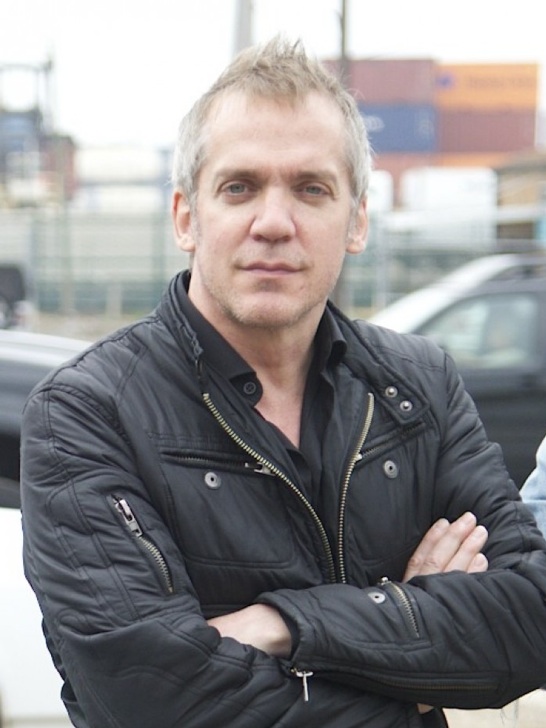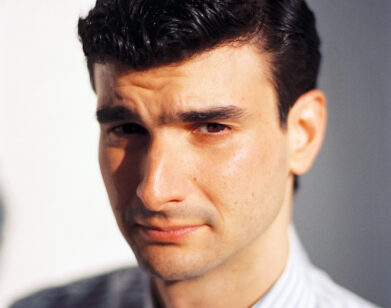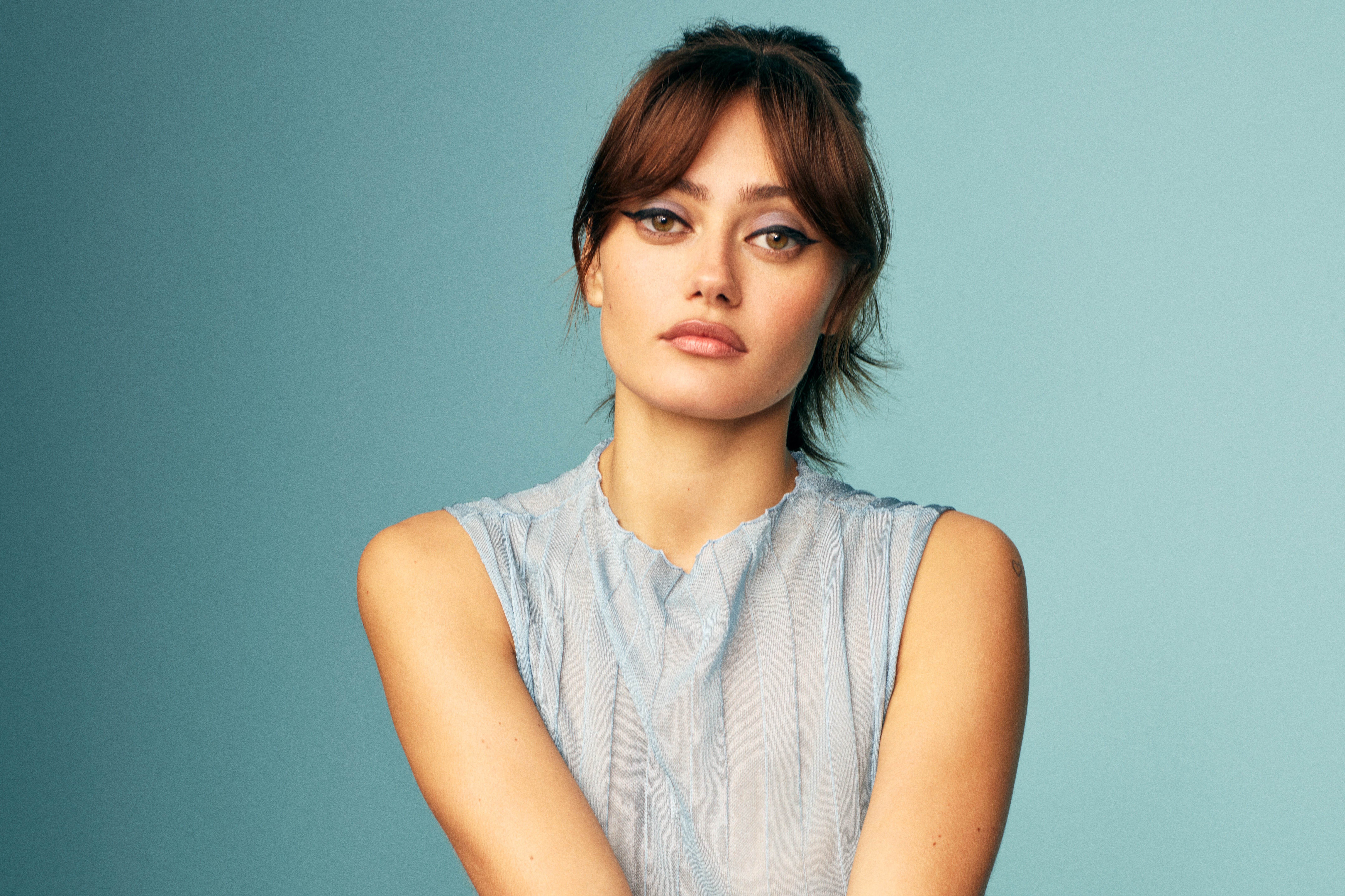Jean-Marc Vallée Takes on More

ABOVE: JEAN-MARC VALLÉE. PHOTO COURTESY OF ANNE MARIE FOX/FOCUS FEATURES.
“I’m from the ‘less is more’ school,” says director Jean-Marc Vallée. “I had to be in the ‘more is more’ zone with Dallas Buyers Club, so I was out of my comfort zone, but I had to trust that.” This change in style, Vallée explains, came from the performances delivered by the films’ leading actors, Matthew McConaughey and Jared Leto. “They were bigger than life, over the top,” Vallée observes. “They were giving me ‘more is more.’ It was too big, I was scared of them. I was going to them, ‘Give me a less-is-more take please, it feels too much.’ ‘Oh, yeah? You think so? All right. Maybe.’ ”
The French-Canadian director’s seventh feature film, Dallas Buyers Club stars McConaughey as a fictionalized version of a real-life AIDS activist, Ron Woodroof. A drug-snorting, bull-riding, threesome-having, macho-masculine, heterosexual, and heteronormative electrician from Texas, Woodroof is diagnosed with AIDS in 1985. He is given 30 days to live and ostracized from his social circle. Dissatisfied with this death sentence, Woodroof becomes an autodidact AIDS expert and travels across the globe to smuggle un-FDA approved treatments into Texas. In the film, McConaughey reluctantly befriends another AIDS patient, Rayon (played by Leto), who gradually introduces him to the largely gay community of AIDS sufferers. Rayon, however, is a fictional character. “It’s not Ron’s life,” Vallée tells us. “It’s based on Ron’s life, but it was created by [screenwriters] Craig [Borten] and Melissa [Wallack].”
McConaughey and Leto’s unmitigated charisma seeped into the way Vallée shot the film: “I filmed them from head to toe or waist up. I was too concerned; I was trying to find the right distance between them and the audience, them and me. I found it in the cutting room.”
EMMA BROWN: When did you first become aware of AIDS?
JEAN-MARC VALLÉE: In ’83, I think, when I was 20. It was on the news or some friends talking about it, but when I saw the first images of guys with Kaposi’s sarcoma on television I went, “Oh my god, what is this? What is going on?” and we got scared.
BROWN: How did you begin your research for the film?
VALLÉE: My first research was about Ron, that’s for sure. I had access to the 25-hour interview [Craig Borten conducted with Ron in 1992]. Then it was just a research about the period, the time period, articles on Ron, journalists. The article that gave Craig the idea. Articles on hate. We had a medical expert with us for some technical [things] that went through the script. I watched How to Survive a Plague. That was a good reference. Ron was, in his own way, an AIDS activist. He didn’t fight along next to the gay community from what I know, but he fought his own combat. There were a lot of Ron Woodroofs in How to Survive a Plague. Different because they were, of course, from New York, but it’s the same combat, same fight.
BROWN: Was Matthew McConaughey already attached to the film when you signed on?
VALLÉE: I think it was pretty much at the same time. I think Matthew called Robbie Brenner, one of the producers, saying that he read the script and that he wanted to do this. Then Robbie had the instinct of sending me the script and uniting us. I read the script and I went, “Jesus! Where was I in the ’80s? Buyer’s club? Buyer’s what?” I didn’t know anything about that. I said “What a beautiful, amazing story. We are going to tell this and we are going to make this film,” and Matthew felt the same. At the beginning, I was skeptical because Matthew is Matthew and that was two years and a half ago, and he was so handsome and so muscled. When you read the script, you don’t really see McConaughey portraying Ron Woodroof. Robbie said, “I know, I know, but meet him. He’s from Texas and he’s really responding very well to the material.” So I met with him and it was in a hotel in New York and we were talking the same language, and I felt he was in a place where he was ready for new challenges in his career and that was quite a new one.
BROWN: Did you ever talk to him about why he decided to remake his career?
VALLÉE: No. Never. But in a career when you hit 40 and you’ve done a lot of this and that, you want to try some new things. I feel like that as a director too, from one film to the other. I’ve done some films and I am looking for new challenges.
BROWN: Was he in character when you met him?
VALLÉE: Matthew? No. The first time, no. He weighed 185. He was handsome. He was everything but the character. Jared was in character when I met him first.
BROWN: I heard that Jared stayed in character the whole time—when did you first meet him as Jared?
VALLÉE: A month ago at the Toronto Film Festival. We talked about it and we spent the day doing interviews, seeing each other and presenting the film. So we had some catching up to do.
BROWN: I know that Rayon is a fictional character. Was Ron embraced by the gay community in real life as in the film?
VALLÉE: I’m not sure no how much he was involved and embraced. That’s more of a question for Craig and Melissa who knew Ron more than I did.
BROWN: What do you think makes a good director?
VALLÉE: To be truthful.
BROWN: To the actors?
VALLÉE: No, to be truthful to yourself and the desire—why you want to make a film and how you embrace filmmaking. What is the sparkle? When I think of directors that I like, I related to that. I like the fact that they are like kids playing with a big toy trying to explore and to have fun. To be at the service of a subject and a story, and submerge themselves into that and try to give an audience a great ride for two hours in the dark, with images, sound, music, silence. When I see great film, I have this feeling of “Oh, wow! Wasn’t that great? Wasn’t that good? I want to do something. I want to scream and go out there and participate and embrace life. Press on the pedal and accelerate.” For me, a guy like Scorsese, Clint Eastwood, Soderbergh, they have such a beautiful understanding of the medium of what filmmaking is—how they explore it and use it to tell stories and move us and make us dream. I guess the dream part is important. Maybe that’s what makes a good director. The dream factor. [laughs]
BROWN: How often does a film move you in that way? Does it happen a lot?
VALLÉE: No. It happens maybe once or twice a year.
BROWN: What was the last film that made you feel that way?
VALLÉE: It was Jacques Audiard‘s A Prophet. When I saw A Prophet I went, “Wow! This is filmmaking.” and what a beautiful life lesson.
BROWN: When did you first aspire to become a director?
VALLÉE: Twenty. At 20, it was something I dreamt that I would do. I didn’t know that I was going to do it, but I was hoping and dreaming that I could do it. I just turned 50. I look back and I’ve got a couple of films and I’m happy.
BROWN: Do you feel very far removed from your early films?
VALLÉE: Yeah, I think so. I look back and of course there’s an evolution. I like how I feel right now when I work—how I try to be creative in the moment, on the day, on the spot and trust the process and the actors and the storytelling and try not to interfere and cut too much. I don’t want to cut good performances. When it’s good, it’s good. On page 60 on a script if you’re crying, it’s on the page, there’s no directing and there’s no acting. Why am I crying on page 60? So when I’m directing page 60, I don’t want to over do it. I’m not going to cover the scene with 20 takes, 20 shots. I’m just going to [say], “Okay, let me see what you’re doing,” and see if the actors are respectful of the emotional content.
BROWN: You did not use artificial light in the film. How did you come to this decision?
VALLÉE: I love that in Café de Flore (2012), the film I shot before. I used it because of the Down syndrome kids I was working with—I used the digital camera also. It was the first time and I never want to go back to film.
BROWN: Oh really?
VALLÉE: Never. I found what I like: working this way with no lights, no flash, no blocking the light. These cameras enable you to do that and it creates a dynamic on the set with the actors. They don’t feel the heat from the spotlights, they don’t have marks and they are not under the impression they’re acting. They’re in a space, they can use 360 degrees, and they can move. I just have to turn and follow them. It’s fast, it’s nice, and it looks real because you are just capturing the light from reality and you’re not trying to show off and to recreate reality. It was just the practical lamps lighting up the place: the candles at the strip club were lighting up the bar in the strip club, same with the restaurant. So it creates this sense of reality, when you look at the film, and it’s shot handheld. You’re not trying to be overdramatic.
DALLAS BUYERS CLUB COMES OUT THIS FRIDAY, NOVEMBER 1.






